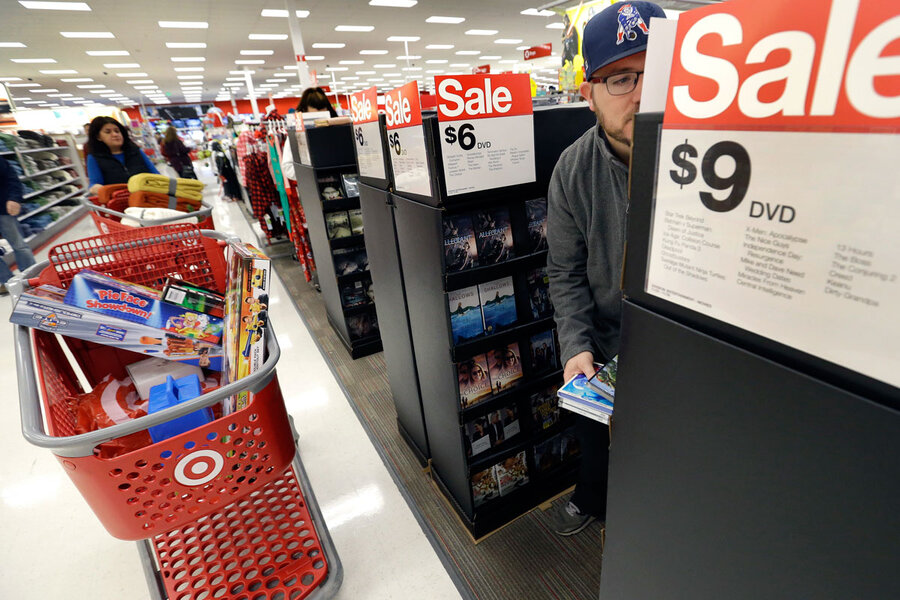US retail sales jumped during the holidays, after a rocky election season
Despite high-profile chains from Macy's to Sears announcing gloomy news on declining holiday sales and store closings, a report released Friday shows that US sales increased a better-than-anticipated 4 percent in November and December 2016, totaling $658.3 billion.
These figures, which exclude sales from cars, gasoline, and restaurants, topped the forecasted increase of 3.6 percent, or $655.8 billion, by the National Retail Federation (NRF), a trade association. Experts said a stronger economy and deals contributed to this unexpectedly bigger growth.
Non-store sales, predominantly e-commerce, were up 12.6 percent this past year, reaching $122.9 billion. The NRF initially predicted a 7 to 10 percent increase.
In strong contrast, however, is a 7 percent decrease in sales at department stores this holiday season.
"These numbers show that the nation’s slow-but-steady economic recovery is picking up speed and that consumers feel good about the future," Matthew Shay, NRF's president and chief executive, said in a statement. "Retail mirrors the economy. And while there might have been some bumps in the road for individual companies, the retail industry overall had a solid holiday season and retailers will work to sustain this in the year ahead.”
The report comes hours after the Commerce Department said core retail sales, which correspond most closely with the consumer spending component of gross domestic product, went up 0.6 percent last month, a 4.3 percent increase from the same month in 2015.
On Monday, a separate report from First Data Corp., which pulled data from cash registers, indicated similar findings on holiday shopping, with holiday spending up 4.7 percent, and online transactions growing by 12 percent compared to last year.
Higher average hourly earnings, lower unemployment, and rising home values and stock market investments were potential factors in the increase in spending, according to NRF's report.
"The economy was clearly stronger in the fall and consumers were more active during the holiday season than they had been earlier in the year," Jack Kleinhenz, NRF's chief economist, said in a statement. "Economic indicators were up, retailers offered great deals, confidence improved and all of that empowered consumers to spend more."
The group also found that last year’s holiday sales varied widely by types of stores. While spending in stores selling clothing, furniture, building materials, and supplies went up, electronics, sporting goods, department stores, and general merchandise stores suffered losses.
With President-Elect Donald Trump’s promises to cut taxes, boost infrastructure spending, and relax regulations, economists expect this trend to likely continue in the upcoming months.
"There is no reason to suspect that consumption growth is going to weaken in the first half of this year," Paul Ashworth, the chief US economist at Capital Economics in New York, told Reuters. "Particularly not when households will be anticipating a potentially big decline in tax rates at some point this year."
This report contains material from Reuters and the Associated Press.







